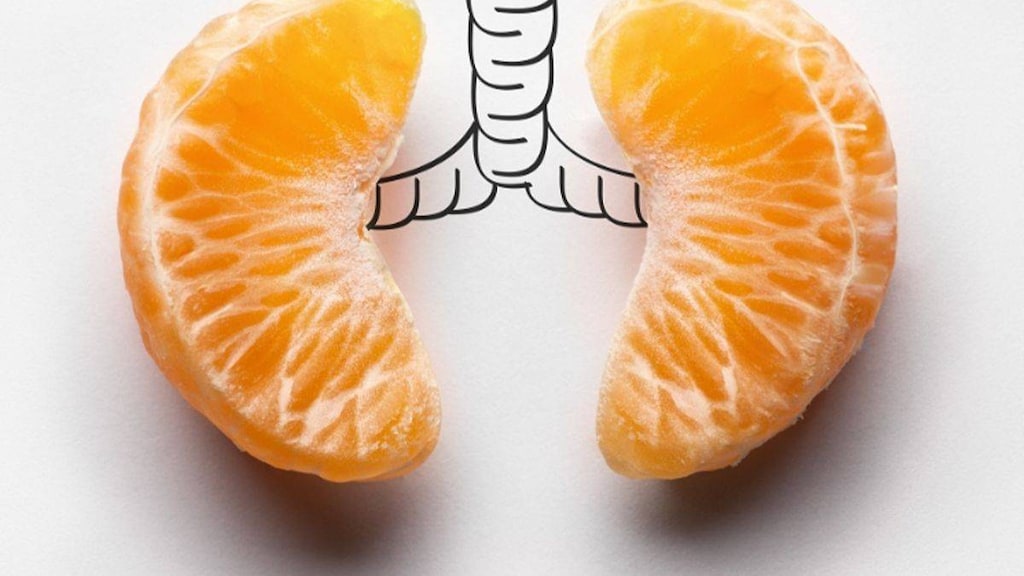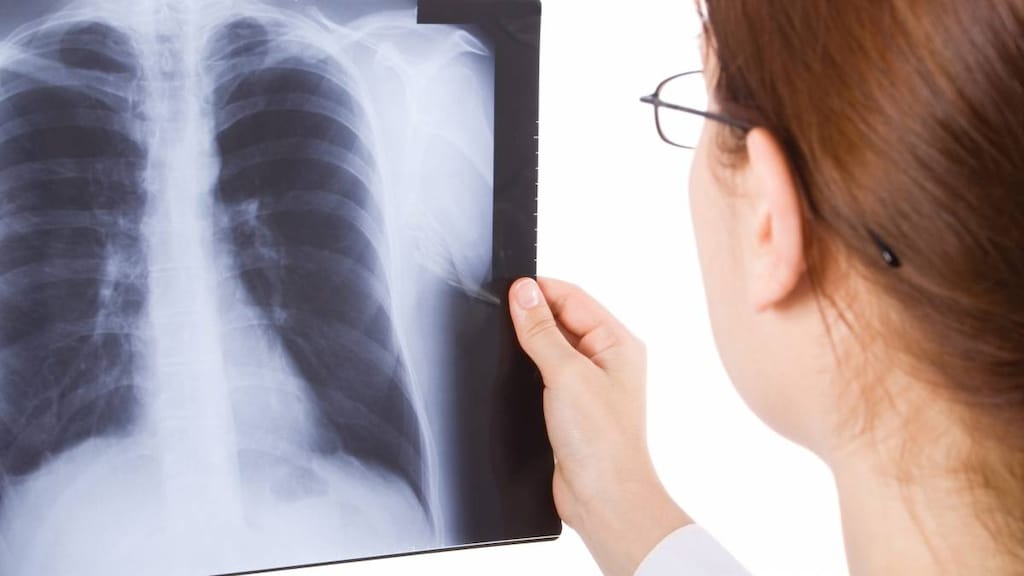Dosage Forms
Excipient information presented when available (limited, particularly for generics); consult specific product labeling.
Solution, Inhalation:
Yupelri: 175 mcg/3 mL (3 mL)
Pharmacology
Mechanism of Action
Revefenacin is a long-acting muscarinic antagonist which competitively and reversibly inhibits the action of acetylcholine at type 3 muscarinic (M3) receptors in bronchial smooth muscle causing bronchodilation.
Pharmacokinetics/Pharmacodynamics
Absorption
Rapid (Quinn 2018)
Metabolism
Primarily metabolized via hydrolysis of the primary amide to carboxylic acid (to the major active metabolite)
Excretion
Feces (primarily); Urine (<1%, as revefenacin and active metabolite)
Onset of Action
Bronchodilation onset is within 45 minutes after a single dose and peak FEV1 effect is 2 to 3 hours following a single dose (Quinn 2018)
Time to Peak
14 to 41 minutes (after start of nebulization)
Duration of Action
Bronchodilation: Up to 24 hours (Quinn 2018)
Half-Life Elimination
22 to 70 hours (revefenacin and active metabolite)
Protein Binding
Revefenacin: ~71%; Active metabolite: ~42%
Use in Specific Populations
Special Populations: Renal Function Impairment
In patients with severe impairment (CrCl <30 mL/minute), revefenacin Cmax and AUCinf increased 1.5-fold and up to 2.3-fold respectively, and active metabolite Cmax and AUCinf increased up to 2-fold and 2.5-fold, respectively.
Special Populations: Hepatic Function Impairment
In patients with moderate impairment (Child-Pugh score of 7 to 9), AUC of revefenacin increased 1.2-fold, and Cmax and AUC of active metabolite increased 1.5-fold and up to 4.7-fold respectively.
Use: Labeled Indications
Chronic obstructive pulmonary disease: Maintenance treatment of chronic obstructive pulmonary disease (COPD)
Contraindications
Hypersensitivity to revefenacin or any component of the formulation
Dosage and Administration
Dosing: Adult
Chronic obstructive pulmonary disease: Oral inhalation: Nebulization solution: 175 mcg (1 unit-dose vial) once daily
Dosing: Geriatric
Refer to adult dosing.
Administration
Nebulization solution: For oral inhalation only; do not inject or swallow solution. Administer by oral inhalation via a standard jet nebulizer with a mouthpiece connected to an air compressor. Remove the unit-dose vial from foil pouch immediately before use. Revefenacin does not require dilution prior to administration. Do not mix with other medications in nebulizer. Discard any used portion.
Storage
Store in foil pouch at 20°C to 25°C (68°F to 77°F); excursions permitted from 15°C to 30°C (59°F to 86°F ). Protect from direct sunlight and excessive heat. Do not remove from foil pouch until immediately before use. Use opened vials immediately.
Drug Interactions
Acetylcholinesterase Inhibitors: May diminish the therapeutic effect of Anticholinergic Agents. Anticholinergic Agents may diminish the therapeutic effect of Acetylcholinesterase Inhibitors. Monitor therapy
Aclidinium: May enhance the anticholinergic effect of Anticholinergic Agents. Avoid combination
Amantadine: May enhance the anticholinergic effect of Anticholinergic Agents. Monitor therapy
Anticholinergic Agents: May enhance the anticholinergic effect of Revefenacin. Avoid combination
Botulinum Toxin-Containing Products: May enhance the anticholinergic effect of Anticholinergic Agents. Monitor therapy
Cannabinoid-Containing Products: Anticholinergic Agents may enhance the tachycardic effect of Cannabinoid-Containing Products. Exceptions: Cannabidiol. Monitor therapy
Chloral Betaine: May enhance the adverse/toxic effect of Anticholinergic Agents. Monitor therapy
Cimetropium: Anticholinergic Agents may enhance the anticholinergic effect of Cimetropium. Avoid combination
Eluxadoline: Anticholinergic Agents may enhance the constipating effect of Eluxadoline. Avoid combination
Gastrointestinal Agents (Prokinetic): Anticholinergic Agents may diminish the therapeutic effect of Gastrointestinal Agents (Prokinetic). Monitor therapy
Glucagon: Anticholinergic Agents may enhance the adverse/toxic effect of Glucagon. Specifically, the risk of gastrointestinal adverse effects may be increased. Monitor therapy
Glycopyrrolate (Oral Inhalation): Anticholinergic Agents may enhance the anticholinergic effect of Glycopyrrolate (Oral Inhalation). Avoid combination
Glycopyrronium (Topical): May enhance the anticholinergic effect of Anticholinergic Agents. Avoid combination
Ipratropium (Oral Inhalation): May enhance the anticholinergic effect of Anticholinergic Agents. Avoid combination
Itopride: Anticholinergic Agents may diminish the therapeutic effect of Itopride. Monitor therapy
Levosulpiride: Anticholinergic Agents may diminish the therapeutic effect of Levosulpiride. Avoid combination
Methacholine: Long-acting muscarinic antagonists (LAMAs) may diminish the therapeutic effect of Methacholine. Consider therapy modification
Mianserin: May enhance the anticholinergic effect of Anticholinergic Agents. Monitor therapy
Mirabegron: Anticholinergic Agents may enhance the adverse/toxic effect of Mirabegron. Monitor therapy
Nitroglycerin: Anticholinergic Agents may decrease the absorption of Nitroglycerin. Specifically, anticholinergic agents may decrease the dissolution of sublingual nitroglycerin tablets, possibly impairing or slowing nitroglycerin absorption. Monitor therapy
OATP1B1/1B3 (SLCO1B1/1B3) Inhibitors: May increase serum concentrations of the active metabolite(s) of Revefenacin. Avoid combination
Opioid Agonists: Anticholinergic Agents may enhance the adverse/toxic effect of Opioid Agonists. Specifically, the risk for constipation and urinary retention may be increased with this combination. Monitor therapy
Oxatomide: May enhance the anticholinergic effect of Anticholinergic Agents. Avoid combination
Potassium Chloride: Anticholinergic Agents may enhance the ulcerogenic effect of Potassium Chloride. Management: Patients on drugs with substantial anticholinergic effects should avoid using any solid oral dosage form of potassium chloride. Avoid combination
Potassium Citrate: Anticholinergic Agents may enhance the ulcerogenic effect of Potassium Citrate. Avoid combination
Pramlintide: May enhance the anticholinergic effect of Anticholinergic Agents. These effects are specific to the GI tract. Consider therapy modification
Ramosetron: Anticholinergic Agents may enhance the constipating effect of Ramosetron. Monitor therapy
Secretin: Anticholinergic Agents may diminish the therapeutic effect of Secretin. Management: Avoid concomitant use of anticholinergic agents and secretin. Discontinue anticholinergic agents at least 5 half-lives prior to administration of secretin. Consider therapy modification
Thiazide and Thiazide-Like Diuretics: Anticholinergic Agents may increase the serum concentration of Thiazide and Thiazide-Like Diuretics. Monitor therapy
Tiotropium: Anticholinergic Agents may enhance the anticholinergic effect of Tiotropium. Avoid combination
Topiramate: Anticholinergic Agents may enhance the adverse/toxic effect of Topiramate. Monitor therapy
Umeclidinium: May enhance the anticholinergic effect of Anticholinergic Agents. Avoid combination
Adverse Reactions
1% to 10%:
Cardiovascular: Hypertension (1% to <2%)
Central nervous system: Headache (4%), dizziness (1% to <2%)
Neuromuscular & skeletal: Back pain (2%)
Respiratory: Nasopharyngitis (4%), upper respiratory tract infection (3%), bronchitis (1% to <2%), oropharyngeal pain (1% to <2%)
<1%, postmarketing, and/or case reports: Paradoxical bronchospasm
Warnings/Precautions
Concerns related to adverse effects:
- Bronchospasm: Paradoxical bronchospasm that may be life-threatening and may occur with use of inhaled bronchodilating agents; this should be distinguished from inadequate response. If paradoxical bronchospasm occurs, manage with a short-acting bronchodilator, discontinue revefenacin, and institute alternative therapy.
- CNS effects: Anticholinergic agents may cause dizziness and blurred vision; patients must be cautioned about performing tasks which require mental alertness (eg, operating machinery or driving).
- Hypersensitivity: Immediate hypersensitivity reactions may occur. Discontinue therapy immediately if an allergic reaction occurs.
Disease-related concerns:
- Glaucoma: Use with caution in patients with narrow-angle glaucoma; may increase intraocular pressure.
- Hepatic impairment: Use is not recommended in patients with hepatic impairment.
- Prostatic hyperplasia/bladder neck obstruction: Use with caution in patients with prostatic hyperplasia or bladder neck obstruction; may cause and/or worsen urinary retention.
- Renal impairment: Monitor for systemic antimuscarinic adverse effects in patients with severe renal impairment.
Concurrent drug therapy issues:
- Drug-drug interactions: Potentially significant interactions may exist, requiring dose or frequency adjustment, additional monitoring, and/or selection of alternative therapy. Consult drug interactions database for more detailed information.
Other warnings/precautions:
- Appropriate use: Revefenacin is intended as a once daily maintenance treatment and is not indicated for the initial (rescue) treatment of acute episodes of bronchospasm or with acutely deteriorating or potentially life-threatening COPD; after initiation of therapy, patients should use short-acting bronchodilators only on an as needed basis for acute symptoms. COPD may deteriorate acutely (over hours) or chronically (over days or longer); if revefenacin no longer controls bronchoconstriction symptoms, short-acting beta2-agonists becomes less effective, or the more inhalations of a short-acting beta2-agonist than usual are required, these may be indicators of COPD deterioration; re-evaluate the COPD treatment regimen. Increasing the daily revefenacin dose beyond the recommended dose is not appropriate in this situation.
Monitoring Parameters
FEV1, peak flow (or other pulmonary function tests); liver function tests (at baseline). Monitor for signs/symptoms of acute narrow angle glaucoma, hypersensitivity reactions, and urinary retention. Monitor for systemic antimuscarinic adverse effects in patients with severe renal impairment.
Pregnancy
Pregnancy Considerations
Adverse events were not observed in animal reproduction studies.
Females of reproductive potential were not included in original studies (Pudi 2017; Quinn 2017).
Patient Education
- Discuss specific use of drug and side effects with patient as it relates to treatment. (HCAHPS: During this hospital stay, were you given any medicine that you had not taken before? Before giving you any new medicine, how often did hospital staff tell you what the medicine was for? How often did hospital staff describe possible side effects in a way you could understand?)
- Patient may experience runny nose, common cold symptoms, headache, or back pain. Have patient report immediately to prescriber difficult urination, painful urination, passing a lot of urine, change in amount of urine passed, shortness of breath, chest pain, fast heartbeat, nausea, vomiting, vision changes, eye pain, eye redness, seeing halos or bright colors around lights, difficulty breathing, wheezing, or cough (HCAHPS).
- Educate patient about signs of a significant reaction (eg, wheezing; chest tightness; fever; itching; bad cough; blue skin color; seizures; or swelling of face, lips, tongue, or throat). Note: This is not a comprehensive list of all side effects. Patient should consult prescriber for additional questions.
Intended Use and Disclaimer: Should not be printed and given to patients. This information is intended to serve as a concise initial reference for health care professionals to use when discussing medications with a patient. You must ultimately rely on your own discretion, experience, and judgment in diagnosing, treating, and advising patients.




